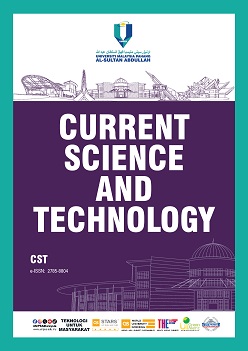Current State of Safety Climate among Food Delivery Service in Kuantan
DOI:
https://doi.org/10.15282/cst.v4i1.10362Keywords:
Gig Economy, Food delivery rider, Safety climate, safety stateAbstract
The gig economy has developed as a transformational force in modern labor markets, typified by short-term, freelancer, or independent employment arrangements. It includes a wide range of on-demand labor where individuals work as independent contractors, offering services or performing tasks via digital platforms or applications. The expansion of this industry has provided workers with unprecedented freedom and opportunity, but it has also presented new concerns, notably in terms of occupational safety. The most popular gig works prior Covid-19 pandemic include food delivery riders. This study aims to investigate the safety climate among food delivery services in Kuantan. This current study was focusing on the safety views of Grab’s delivery service workers in Kuantan. About 100 respondents participated in this study through convenience sampling. The safety climate assessment was conducted using the NORDIC safety climate questionnaire. From the result, the highest mean value of the seven safety domains was in the Safety procedures and rules domain (2.78), and the lowest mean value belonged to the safety climate domain (2.41).
References
[1] “Understanding the gig economy: The rise of on-demand workforce.” Accessed: Dec. 23, 2024. [Online]. Available: https://www.fieldengineer.com/article/gig-economy/
[2] A. Rahim, A. Yaacob, R. M. Noor, N. A. Najid, and N. Zulkifli, “Strengthening the gig economy: Future of digital labor workforce platform post-COVID-19,” Gading Journal for Social Sciences vol. 24, no. 4, pp. 17-26, 2021.
[3] U. Bajwa, D. Gastaldo, E. Di Ruggiero, and L. Knorr, “The health of workers in the global gig economy,” Globalization and Health, vol. 14, pp.1-4, 2018.
[4] J. Duggan, U. Sherman, R. Carbery, and A. McDonnell, “Algorithmic management and app-work in the gig economy: A research agenda for employment relations and HRM,” Human Resource Management Journal, vol. 30, no. 1, pp. 114-132, 2020.
[5] Daryl Balderson, “Safety defined a means to provide a safe work environment,” Professional Safety, vol. 61, no. 5, pp. 63-68, 2016.
[6] F. Lestari, R. Y. Sunindijo, M. Loosemore, Y. Kusminanti, and B. Widanarko, “A safety climate framework for improving health and safety in the Indonesian construction industry,” International Journal of Environmental Research and Public Health Article, vol. 17, no. 20, p. 7462, 2020.
[7] M. D. Cooper and R. A. Phillips, “Exploratory analysis of the safety climate and safety behavior relationship,” Journal of Safety Research, vol. 35, no. 5, pp. 497–512, 2004.
[8] M. K. Lee, D. Kusbit, E. Metsky, and L. Dabbish, “Working with machines: The impact of algorithmic and data-driven management on human workers,” in Proceedings of the 33rd Annual ACM Conference on Human Factors in Computing Systems, pp. 1603-1612, 2015.
[9] M. A. Griffin and M. Curcuruto, “Safety Climate in Organizations,” Annual review of organizational psychology and Organizational Behavior, vol. 3, no. 1, pp. 191-212, 2016.
[10] P. Kines, J. Lappalainen, K. L. Mikkelsen, E. Olsen, et al., “Nordic Safety Climate Questionnaire (NOSACQ-50): A new tool for diagnosing occupational safety climate,” International Journal of Industrial Ergonomics, vol. 41, no. 6, pp. 634–646, 2011.
[11] N. Xuan Mai, L. Nhat Hoang, and D. Quy Nguyen-Phuoc, “Factors influencing safety compliance behavior among food delivery riders-an application of safety climate model,” Journal of Science and Technology - University of Da Nang, vol. 21, no. 9.3, pp. 14-18, 2023.
[12] S. Mattila, T. Heinonen, S. Tappura, and K. Ylikahri, “Occupational safety and health risks of gig workers in Finland,” Studies in Systems, Decision and Control, vol. 492, pp. 489–498, 2024.
[13] N. Christie and H. Ward, “The health and safety risks for people who drive for work in the gig economy,” Journal of Transport & Health, vol. 13, pp. 115–127, 2019.
[14] J. Z. N. Ajslev, E. Sundstrup, M. D. Jakobsen, P. Kines, J. Dyreborg, and L. L. Andersen, “Is perception of safety climate a relevant predictor for occupational accidents? Prospective cohort study among blue-collar workers,” Scandinavian Journal of Work, Environment and Health, vol. 44, no. 4, pp. 370–376, 2018.
[15] M. Abeje and F. Luo, “The influence of safety culture and climate on safety performance: Mediating role of employee engagement in manufacturing enterprises in Ethiopia,” Sustainability (Switzerland), vol. 15, no. 14, p. 11274, 2023.
[16] V. Kolosok and Y. Lazarevska, “Communication management in the logistics business,” Theoretical and Practical Aspects of Economics and Intellectual Property, vol. 0, no. 18, pp. 186–189, 2018.
[17] G. Jossec and O. Shanahan, “Training the logisticians of the future: skill implications of technological changes in the transport and logistics industry,” In Australasian Transport Research Forum (ATRF), 37th, 2015, Sydney, New South Wales, Australia.
[18] P. A. Buxbaum, “Marketing and logistics: Making the marriage work,” Inbound Logistics, 1998.
[19] R. M. Olwan, Intellectual Property and Development: Theory and Practice, pp. 1–392, 2013.
Downloads
Published
Issue
Section
License
Copyright (c) 2024 The Author(s)

This work is licensed under a Creative Commons Attribution-NonCommercial 4.0 International License.



